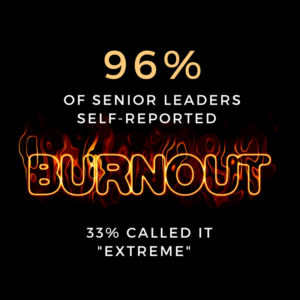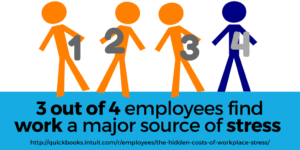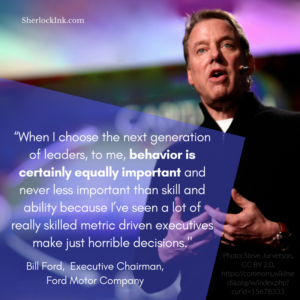Corporate mindfulness and resiliency have been rapidly expanding in corporate culture and workplaces around the world. Top business magazines such as Harvard Business Review, Bloomberg Businessweek, Fortune, The Economist, Fast Company and Inc. regularly publish articles on workplace mindfulness and resiliency.
Companies are investing in mindfulness in ever increasing numbers. One survey estimated that by the end of 2016, 22% of Fortune 500 companies would have delivered training in mindfulness and other brain programs to their employees. That percentage was predicted to potentially double in 2017.
Why have corporate mindfulness and resiliency become so popular?
Stress, Stress, Stress (burn out): Today’s Workplace Reality
One big reason for the widespread growth in corporate mindfulness and resiliency is the epidemic of stress in the workplace.
Stress is outstripping people’s ability to cope leaving employees feeling “checked out” or “actively disengaged” from their jobs.
Over a third of employees are reporting chronic stress. Chronic stress is a one-way trip to burn out. People report feeling unable to bounce back the way they once did.
It’s even worse at executive and managerial levels. In a study from Harvard Medical School, 96% of senior leaders self-reported burn out to some extent.
33% of the executives said their burn out was “extreme“.

Stress is estimated to cost companies $300 billion a year in absenteeism, presenteeism and turnover. Workplace suicide has climbed dramatically since 2007.
Unfortunately, stress in the workplace is still treated like a misguided badge of honor. Employees can’t admit that they’re struggling under stress for fear of being labeled deficient or weak.
That means they don’t get the help they need. In one study, only 36% of employees felt their organizations provided enough resources to help them manage that stress.
It’s even worse for executives. Leaders often hide stress and burn out because they feel a responsibility to be a strong presence for the company. That leaves many executives feeling lonely and isolated.
That’s where corporate mindfulness and resiliency come in.
Mindfulness reduces stress levels. It helps people both decrease the amount of stress and reset after stressful events. That makes you better able to navigate daily workplace and personal challenges.
It makes a more resilient you in the face of stress.
What is corporate mindfulness?
What exactly is this thing we call corporate or workplace mindfulness?
You might be surprised: there is no agreed upon definition for either mindfulness or workplace mindfulness.

Mindfulness and resiliency are umbrella terms
That’s because mindfulness isn’t a specific practice or approach. It’s an umbrella term. Although people talk about mindfulness as though it’s a single thing, it’s more like a family of awareness and reflective practices and capabilities.
Mindfulness grew out of contemplative and meditative traditions that have deep roots in eastern philosophies – from Buddhism to Hinduism, Judaism, Christianity, and Islam. As you can imagine, there have been many variations on the theme of mindfulness over its long history and migration to the west.
There isn’t even a single mindfulness meditation. There are about 4 pretty common ones (that’s valuable to know because not all meditations work equally well for all people. And, in fact, you don’t necessarily have to meditate to practice mindfulness).
What’s the takeaway?
Basically that what people call corporate mindfulness takes many shapes and goes by many names. The same is true of resiliency.
Definitions of corporate mindfulness
You’d still like a definition?
One commonly quoted definition for corporate mindfulness comes from Jon Kabat-Zinn.
Kabat-Zinn first studied mindfulness under a spiritual teacher. The teachings had a profound effect on his daily life. Wanting to share the information to help others, he developed his own program based on what he’d learned.
But then he did something a little different. He secularized his mindfulness program.
By secularizing mindfulness, he opened it up to whole new groups of people.
In 1979, Kabat-Zinn gathered a group of chronically ill patients who weren’t responding well to traditional treatment and enrolled them in his course. The program was a great success. It’s now the well-known Mindfulness-Based Stress Reduction (MBSR) program at the University of Massachusetts Medical School.
Kabat-Zinn’s definition of mindfulness is the “awareness that arises through paying attention, on purpose, in the present moment, non-judgmentally.”
Dan Harris, who wrote 10% Happier after suffering a panic attack on national television describes mindfulness as “the ability to know what’s in your head at any given moment without getting carried away.” https://www.youtube.com/watch?v=w6T02g5hnT4
Our thoughts on corporate mindfulness
Our approach to corporate mindfulness is a little broader. Mindfulness enables you to take back control over your life and increasingly show up more for who you are and who you want to be. That naturally makes you more engaged, connected, intuitive, aware and happier. It gives you more choice. More freedom.
It’s about you becoming the leader in your own life. Because if you’re not leading, who is?
Corporate mindfulness is about increasing the emotional and mental health of our psyches – both at the individual employee level and that of the organization or corporation.
Having more energy and productivity because you’re less caught up in things that take you off-track or onto the emotional roller coaster. Ensuring critical self-care. Better relationships and teamwork. Seeing how we get in our own way and dismantling limiting ideas and behaviors. Aligning with your values so you feel and act in greater integrity. Increasing compassion.
Of course, this doesn’t happen overnight, but it’s easier getting started than you might think.
Let’s dive a little deeper and see how mindfulness and workplace mindfulness work…
How mindfulness and resiliency help

You’ve probably had the experience of being at work and your mind wandering to think about a loved one. And then being with a loved one and your mind wandering back to your unfinished work.
It’s not a great scenario. Everyone and everything is getting only your partial attention. You end up feeling frustrated and guilty – and not especially productive.
That’s what people mean when they talk about mindfulness helping you be present. Corporate mindfulness practices increase your ability to bring attention to the task at hand. You spend less time in the past with regrets and anger and less casting into the future with anxiety.
Why the promise of mindfulness presence can be confusing
The idea of being present can create some confusing ideas about mindfulness. One blog post described a moment of mindfulness as ‘working at the computer in the office while being aware of the task at hand, the hum of the air conditioner, tension in the shoulders and others all around.’
Yikes, that sounds like torture. Being aware for the sake of being aware isn’t necessarily useful.
The idea of being in the present moment is a bit of a misconception.
There is no single present moment. Our consciousness is way too vast, multi-layered and complex for that.
Instead, mindfulness offers us things that much more valuable: more awareness, increased positivity and more choice over where we put our attention and how we use it.
Mindfulness helps us focus and to return to focus when we lose concentration on a task. It enables us to remain in widened perspective when useful. And it helps us move into states like flow where we experience more creativity.
Mindfulness also helps us use our minds and emotions to our advantage. We don’t have to be at the mercy of old ways of thinking and being, responding on autopilot. It helps us hear our bodies so we can self-care before problems become chronic.
The case for corporate mindfulness and resiliency is pretty straightforward
Research on corporate mindfulness and resiliency programs show they:

• Save money
• Enhance job performance
• Improve workplace culture
• Decrease emotional exhaustion and increase job satisfaction
And they do it without the side effects of substances like drugs. Corporate mindfulness and resiliency are key components of workplace wellness programs as well as leadership development and optimal performance approaches.
What do executives and managers get out of mindfulness?
For decades, mindfulness has been quietly growing in the c-suite. Now more and more leaders are talking about their mindfulness practices and the value they get from them both professionally and personally. These are some of the most common benefits leaders talk about:
• Reduces my stress
• Helps me maintain good health; increases the resiliency of my immune system
• Benefits my relationships – including family, friends and business
• Helps me make clearer, more effective decisions on the job. I’m more thoughtful and focused.
• I’m better able to set priorities
• I’m able to stay more calm under stress – take things as they come
• I feel more in control of my life
• Increases my physical and mental energy
Workplace benefits commonly associated with corporate mindfulness
Attention and focus – various research studies suggest that mindfulness decreases mind wandering and distraction and increases attention and focus.
Relaxed alertness – mindfulness helps our brains move from the more intense concentration state of beta to the more alpha state. The latter is much more restful for the body and emotions and gives you an expanded perspective. Imagine sitting in a meeting in a state of relaxed alertness (a restful but aware state) and you can see why this mindfulness benefit is so useful in the workplace.
Self-awareness – mindfulness empowers us to be more self-aware providing foundations for self-care and resiliency
Resiliency in the face of stress – mindfulness strengthens us so we experience less stress and helps us reset in times of high stress
Decreased emotional reactivity and increased positivity – research has found mindfulness fosters positivity and reduces negative emotional reactions
Empathy and compassion – by increasing empathy and compassion, mindfulness helps us be better leaders and team members
Mindfulness and Soft Skills
Hard skills are things like accounting or programming – part of the skill set required to do a job. They’re obviously important, but leaders are increasingly realizing a good employee will pick up any gaps pretty quickly.
It’s the soft skills that are often the larger factor determining people’s success in their roles. They’re particularly important for people in leadership and management positions. These days, they’re a big part of organizations finding meaningful ways to stay competitive.
But they’re a lot trickier. They’re harder to pin down and develop in people. They’re tougher for corporations to measure. And they aren’t something you can learn once and you’re done. They’re capacities that people need help nurturing throughout their careers.
Many employees struggle as they move up the corporate ladder: they get promoted due to hard skills, but need more soft skills to manage effectively. The irony is that there’s usually a lot less training provided for the soft than the hard skills.
Corporate mindfulness sets the foundation for a lot of these key soft skill capabilities:

• Integrity
• Communication
• Courtesy
• Responsibility
• Positive attitude
• Professionalism
• Teamwork and collaboration
• Leadership
• Adaptability and flexibility
• Critical observation
• Creativity
Soft skills are often taught as behaviors you try to emulate. Researchers go out in the field and identify leaders in various industries and attempt to study and figure out why these people or organizations are thriving. They then develop a list of behaviors they’ve identified which become the basis of critical skills to be learned.
And that’s well and good. We need that information. But it can be a hard way to try to develop your soft skills. It takes a lot of effort and can feel unnatural, inauthentic and lead to people feeling less than confident. As well, it doesn’t always work – simply adopting certain behaviors doesn’t necessarily make you good at a particular soft skill.
The mindfulness approach to soft skills is a little different. Instead of trying to adopt or add on new behaviors, you explore learning these skills from the inside out. It’s more about you deepening your relationship to yourself to find your version of these soft skills naturally and making them your own.
If you’re interested in soft skill development via mindfulness, please get in touch.
Mindfulness Research: Neuroplasticity
There’s another reason for the upsurge in corporate mindfulness popularity: the research into mindfulness has grown exponentially since the 1990s. Part of this is due to advances in neuroscience which have made it easier to measure changes in the brain.
Two things have come out of this research.
The first is that there’s an ever-growing stack of studies suggesting numerous benefits of mindfulness practices.
Secondly, mindfulness research completely flipped our view of our brains and their potential.
We used to think that our brains were set by about 2 years of age. From there, it was believed to be all downhill as our brains and nervous systems lost neurons.
Now we know that we can change both our brain structure and function right to the end of our lives.

That’s no small wonder. It means with mindfulness and other techniques, we can optimize our brains in response to a changing world.
The bad news about neuroplasticity
There’s a down side to brain plasticity. We know our brain changes based on how we use it.
The bad news? We’re using our brains really badly.
Poor workplace and lifestyle habits = brains that are more distracted, less efficient and more overwhelmed.
Our brains are gradually losing the capacity to attend fully and thoroughly to anything. We’re shrinking our grey matter.
That’s another reason why corporate mindfulness and resiliency programs are needed in workplaces. Even if all you learn is how to stop harming your brain, you’re going to come out leaps and bounds ahead.
Building Mindful and Resilient Corporate Cultures
People talk a lot about the effect of mindfulness and resiliency on individual employees.
That’s only the start of the value. Mindfulness and resiliency are also keys to healthier, more mature corporate cultures.
Let’s use soup as a metaphor to explain this (Soup!? Whaat? Keep reading…).
In this metaphor, the soup is the corporation and the broth equals the corporate culture.
Most corporations are really good at developing fantastic new ideas, projects and programs.
That’s fantastic. It’s like heading over to the local farmer’s market and buying the freshest, most beautiful, organic ingredients and lovingly preparing them to add to your broth.
But no matter how good those ingredients are, if your broth is off, the moment you drop those sweet veggies into your broth, they’ll be tainted. You’ll simply never be able to make good soup until you fix the broth.
Same with corporations. You can create all the sweetest, top quality programs and endeavors you want. But when you drop them into your organizational culture, they take on the flavor of that environment.
That’s why organizations often see little reward on all their efforts.
Characteristics of unhealthy organizations
Unhealthy organizations commonly share certain characteristics:
harassment, discrimination, retaliation, win-lose worldviews, competitiveness (especially cut-throat) and a tendency to put up with ‘good performers’ at the expense of others.
Sometimes these characteristics are overt. Usually, though, they’re operating subtly as the organization espouses wonderful values on the surface – which makes ferreting them out difficult. It’s why mindfulness is such a key component of healthy and empowered corporations.
Enron, who went bankrupt from fraud with senior leaders going to jail, had their values written on the lobby walls: integrity, communication, respect, excellence. They had a 64-page Enron Code of Ethics Manual outlining the company’s mission, core values and ethical policies.
Obviously, that wasn’t what they were living on a day-to-day basis. 
If you’d asked someone at Uber about sexual harassment, my guess is that they would have told you that it simply wasn’t tolerated – perhaps by the very HR department and managers who were enabling it. [Update: Susan Fowler blogged on her experience at Uber. She called it “strange, fascinating, and slightly horrifying.” Her story shows the impact on good and commited employees as they struggle to operate in a broken system. It also demonstrates how such big issues can fly under the radar within organizations. Until they don’t anymore. At some point, these things usually come to light with high costs to the organization. Fowler’s may be a horrifying story, but it’s hardly an unusual one].
So how does corporate mindfulness improve company culture?
How does mindfulness improve corporate cultures? It increases self-awareness at both the individual and organizational levels.
Secondly, mindfulness practices such as meditation develop empathy and compassion which are the foundation of positive and emotionally safe atmospheres where teamwork can thrive. In positive environments, human connection keeps the brain’s higher centers functioning well, even in times of stress.
What’s the difference between mindfulness and resiliency?

There’s lots of overlap between mindfulness and resiliency. They both involve actions and habits to build energy and promote well-being. Both use self-awareness as a central tool – to stay in touch with the sometimes subtle signals of our bodies, minds and feelings so that we can address physical, mental and emotional needs before situations become unhealthy.
Even more than mindfulness programs, resiliency programs vary widely. Most of them use mindfulness techniques. Meditation and other mindfulness practices reduce anxiety – a key component of remaining resilient.
Probably the biggest difference is that resiliency has a greater focus on self-care – cultivating habits to recharge batteries and keep your cup full – so that you are able to bounce back after stressful events. Mindfulness often explores that, too, although the idea of self-care sometimes gets lost in the focus on awareness. Corporate mindfulness also capitalizes on awareness to help people become better leaders and team members.
Our approach is to bring you the best of all worlds: combining mindfulness and resiliency – along with the latest research on happiness that shows happy employees are both healthy and high performing.


